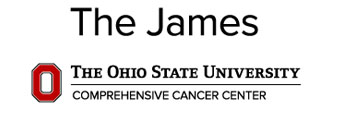(Columbus, Ohio) Between our smartphones, computers and watches, many of us simply can’t imagine life without digital technology. And now it’s now changing the way the way doctors review many of our medical test results.
Digital pathology is moving from promise to practice at The Ohio State University Comprehensive Cancer Center – Arthur G. James Cancer Hospital and Richard J. Solove Research Institute. “We’re talking about leaps in cancer diagnostics,” said Dr. Anil Parwani, Vice Chair and Director of Anatomic Pathology at Ohio State. “It has revolutionized cancer diagnostics, and this technology gives me the tools to answer questions in a way that simply wasn’t possible five years ago.”
For decades, cancers have been diagnosed by carefully cutting thin layers of tissue taken from patients, putting those layers on glass slides and analyzing them under microscopes. It is a meticulous process and if the slides had to be sent off to be evaluated by specialists in another city or state, a diagnosis could take days or even weeks.
“With digital pathology, you take those same glass slides and you digitize them and create
millions of pixels, converting them into a large image,” Parwani says. “We can even create 3D models from the information and see cancers in an entirely new way.”
The digital files are much easier to store, share and access. But most importantly, the information they provide allows doctors to more quickly and accurately stage and grade specific types of cancer.
The technology has already paid off for 74-year old Mike Minshall. “I was told by one doctor that I had two months to live, and it was absolutely devastating,” he said.
Then Minshall got a second opinion from doctors at The Ohio State University – James Cancer Hospital and Solove Research Institute. “They didn’t think my case was that bad and took a whole different approach to treating me.”
A year later, Minshall is now cancer-free.








